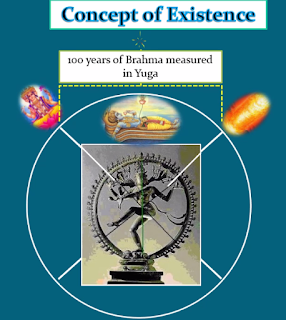The series so far:
The 8th part of the Indic Series makes a slight departure from the narrative tracing the development of the Indic past until the time of mini Ice age called Younger Dryas (11,000 years ago) when the planet Saturn was discovered and Vivasvan (the sun) was perceived as Martanda. These two developments place un-challengeable upper limits to the formation of two types of Yuga concepts, namely, the Catur Maha Yuga concept measuring the age of Brahma and the 5-year Yuga concept having practical application in the Vedic society. Therefore these two are discussed along with the Manvantra concept in three episodes before coming back to catch up with where we left.
The 8th part of the Indic Series makes a slight departure from the narrative tracing the development of the Indic past until the time of mini Ice age called Younger Dryas (11,000 years ago) when the planet Saturn was discovered and Vivasvan (the sun) was perceived as Martanda. These two developments place un-challengeable upper limits to the formation of two types of Yuga concepts, namely, the Catur Maha Yuga concept measuring the age of Brahma and the 5-year Yuga concept having practical application in the Vedic society. Therefore these two are discussed along with the Manvantra concept in three episodes before coming back to catch up with where we left.
The current episode gives a brief account on the Catur
Maha Yuga concept that it is based on the planetary
revolutions expressed in terms of Time and not
applicable to human life. As such the view that Ramayana occurred in Treta Yuga lakhs of
years ago has no basis. This is supported by highlighting the fact that
the Indian landmass was not where it is now when the
current Manvantra of Vaivasvata started.
The purpose of the Catur Maha Yuga is further
explored by deciphering the dancing posture of Nataraja.
The primary utility of the Catur Maha Yuga concept running into lakhs of years
is to measure the entire span of space that is one-fourth of the manifest form
of Brahman, in terms of time for which the basic unit is taken as the solar
year. This concept could have been conceived only after
11,000 years BP (before present), for the very fact that this
computation demands knowledge of the five Tara grahas[i]
that include Saturn.
This Yuga concept is also matched with current
science on Big Bang.
It is found that we are in the 2nd day of
Brahma after the Big Bang event. This concept also reveals that the
night kalpa of Brahma started 1.16 billion years before the Big Bang.
This is followed by a discussion on how the knowledge of the fundamentals of
this concept is essential for solving some of the tricky issues found in
Mahabharata. Four issues are solved using the fundamentals.
1. The
Amanta system has been in vogue ever since the
Yuga concept was perceived. As such the origins of Purnimanta
system antedates the discovery of Saturn and could be traced to the south of
the equator which we will be discussing in a future episode.
2. The
verses of Mahabharata pertaining to sensing the arrival of Kali during the Mahabharata
war are not about the computational Catur Yuga concept
that is planet based, but about the nature of Time - as adharmic. In such scenario
within a short period, any one of the four yugas can be sensed in any order and
even found changing quickly from one to another. This will be elaborated in the
10th episode.
3. The
Rahu- Ketu axis is an essential pre-condition for determining the evidence on an eclipse. This
axis comes back to the same signs at the end of 18 years (since they complete
one revolution around the zodiac in 18 years). This axis was in Pisces – Virgo at
the time of the beginning of the Kali Maha Yuga when all the planets except
Rahu congregated at the beginning of Aries. They must have been hovering around
the same signs at the time of Mahabharata war that took place on the 36th
year before Kali Yuga began.
Unfortunately most research works
on Mahabharata date show this axis in Taurus- Scorpio by wrongly interpreting the 13 day twin lunation as twin
eclipses.
4. How
the lack of knowledge of the fundamentals leads to mis-interpretations is demonstrated
pictorially the process of the tithi concept.
Amavasya can happen starting from 14th to 15th tithi or
from 15th to 16th (technically it is the 1st
tithi otherwise), but never from 13th 14th
tithi. If that happens it means the moon’s path is shortened which is
impossible to happen.
Vyasa (others too including Karna,
Krishna, Balarama) was appalled on seeing Amavasya occurring
on Trayodashi. He was anxiously watching the next phase which also ended
on the 13th tithi, on the same star as in the previous month. This
reduction can be caused by a reduction
in the circumference of the orbit of the moon, which has no explanation
other than a comet smashing on
the moon, almost shaking it temporarily. A similar event shook off the
moon in Raivataka manvantra which I will explain
in the next episode.



